Join us as we embark on a comprehensive journey to uncover the extensive benefits of omnichannel retailing, exploring how this strategy is transforming the retail sector and why it has become indispensable for businesses seeking to succeed in the digital age.
Table of Contents
Benefits of Omnichannel Retail
The benefits of omnichannel retailing extend far beyond the traditional boundaries of retail, offering a strategic advantage that impacts every facet of the business. From transforming customer experiences to driving sales and improving inventory management, the omnichannel approach is a comprehensive strategy that responds to the evolving needs of the modern consumer and market dynamics. The benefits of omnichannel retailing are extensive and impactful, offering a strategic approach that aligns with the future of retail. By focusing on these key areas, retailers can not only navigate the complexities of the modern retail environment but also thrive, building a sustainable competitive advantage that drives long-term success.
Customer Experience and Engagement
Omnichannel retailing places a significant emphasis on providing a unified and seamless customer experience across all channels, whether in-store, online, or through mobile apps. This integration ensures that customers can interact with a brand in a manner that is most convenient for them, at any given time, enhancing their shopping experience and engagement. By leveraging technologies such as AI and machine learning for personalized recommendations and employing strategies like click-and-collect, retailers can offer a more customized and responsive service that meets the high expectations of today’s shoppers.
Enhancing Customer Experience Through Seamless Integration
The hallmark of omnichannel retailing is its ability to provide a cohesive customer experience across all channels, whether online, in-app, or in-store. This seamless integration is a critical benefit, as it caters to the modern consumer’s desire for convenience, efficiency, and flexibility. By ensuring that every touchpoint a customer interacts with is interconnected, retailers can offer a shopping journey that is not only smooth but also feels personalized and intuitive.
Seamless integration means that customers can switch between channels without losing context or having to repeat steps. For example, a customer can start their purchase journey on a mobile app, continue on a desktop browser, and complete the transaction in-store or through a social media platform. This level of integration requires a robust backend infrastructure that can track and manage customer interactions across all platforms in real-time, ensuring that inventory, pricing, and promotional information are consistent everywhere.

This approach not only enhances the shopping experience but also builds trust. When customers see that a retailer provides a consistent experience across all platforms, they’re more likely to view the brand as reliable and customer-centric. The benefits of omnichannel retailing in this aspect are clear: increased customer satisfaction, higher loyalty, and ultimately, more sales.
Seamless integration in omnichannel retailing is a fundamental component that significantly enhances the customer experience. This approach merges various shopping channels, such as physical stores, online websites, mobile apps, and social media platforms, into a unified, cohesive customer journey. By ensuring that all channels operate in harmony, retailers can offer a consistent and convenient shopping experience that meets the evolving expectations of today’s consumers. The benefits of such seamless integration are profound and multifaceted, touching on every aspect of the customer’s interaction with the brand.
- Consistency Across Touchpoints: One of the primary benefits of seamless integration in omnichannel retail is the consistency it offers across all touchpoints. Customers expect their interactions with a brand to be uniform, whether they are shopping online from a desktop or mobile device, via a mobile app, or in a physical store. This consistency extends to product availability, pricing, branding, and the overall quality of service. When customers receive the same level of service and information across all channels, it builds trust and confidence in the brand, enhancing their overall experience and satisfaction.
- Convenience and Flexibility: The ability to shop, browse, and interact with a brand across multiple channels offers unparalleled convenience and flexibility to customers. Seamless integration means that customers can start their shopping journey on one channel and complete it on another without any disruption. For example, a customer might browse products on a mobile app, add items to their cart, and then complete the purchase on a desktop browser. Alternatively, they could choose to pick up their online order in a physical store. This flexibility enhances the shopping experience by catering to the preferences and needs of each customer, making it more likely that they will complete a purchase.
- Efficient Customer Support: Seamless integration in omnichannel retail also improves customer support by providing multiple channels for customers to seek assistance. Whether it’s through live chat on a website, a phone call, social media, or in-store, customers can choose the most convenient way to get the help they need. Furthermore, by integrating these channels, retailers can offer a more cohesive and efficient support experience. Customer service representatives have access to the customer’s full interaction history with the brand, allowing them to provide more informed and effective support, thus enhancing the overall customer experience.
- Enhanced Inventory Management: From the customer’s perspective, seamless integration improves the shopping experience by providing real-time visibility into product availability. Customers can check inventory levels across different channels, reserve products online for in-store pickup, and even see alternative options if their desired product is out of stock. This transparency ensures that customers can make informed decisions, reducing frustration and increasing satisfaction with the brand.
- Streamlined Returns and Exchanges: An omnichannel approach simplifies the process of returns and exchanges, a crucial aspect of customer satisfaction. Customers have the flexibility to return online purchases in physical stores or via mail, depending on their convenience. This streamlined process, facilitated by seamless integration, enhances the post-purchase experience, reinforcing the customer’s decision to choose a brand that prioritizes their convenience and satisfaction.
All in all, the benefits of seamless integration in omnichannel retail are integral to enhancing the customer experience. By offering consistency, convenience, efficient support, and transparency, retailers can meet the high expectations of modern consumers, fostering loyalty and driving long-term success.
Personalization and Its Impact on Customer Engagement
Personalization stands at the core of the benefits of omnichannel retailing, driving deeper customer engagement by making interactions more relevant and meaningful. Omnichannel retailing leverages data analytics to understand customer preferences, purchase history, and behavior across all channels, enabling retailers to deliver personalized messages, recommendations, and offers that resonate with each individual.
The impact of such tailored experiences is profound. Customers who feel understood and valued are more engaged, exhibit greater brand loyalty, and are more likely to make repeat purchases. Furthermore, personalization can significantly enhance the effectiveness of marketing campaigns, reducing waste by ensuring that promotions are only sent to those most likely to be interested.
Personalization in omnichannel retailing is a key driver of enhanced customer engagement, transforming the way businesses connect with their customers across multiple platforms. By leveraging customer data to deliver tailored experiences, retailers can significantly improve interaction quality, satisfaction, and loyalty. The strategic implementation of personalization across all channels—online, in-store, through mobile apps, and social media—offers numerous benefits that collectively elevate customer engagement to new heights.
- Increased Relevance and Connection: Personalization makes every interaction more relevant to the individual customer, whether it’s a product recommendation, promotional offer, or even the content of an email. By analyzing customer data, including past purchases, browsing behavior, and preferences, retailers can curate experiences that resonate on a personal level. This increased relevance fosters a stronger connection between the customer and the brand, as customers feel recognized and valued as individuals, not just as part of a broad consumer base.
- Improved Customer Experience: The benefits of personalization in omnichannel retailing extend to the overall customer experience. Personalized experiences are inherently more satisfying for customers because they cater to the customer’s unique needs and preferences. For instance, personalized shopping paths can guide customers to products they are more likely to purchase, simplifying their journey. Similarly, personalized communication can provide customers with valuable information that is directly relevant to their interests, enhancing their perception of the brand as attentive and customer-centric.
- Higher Conversion Rates: Personalization directly impacts conversion rates by making it easier for customers to find products or services that meet their needs. Tailored product recommendations and targeted promotions are more likely to resonate with customers, leading to increased purchase intent. By presenting customers with options that are aligned with their preferences and previous interactions, retailers can significantly reduce the friction associated with the decision-making process, thereby increasing the likelihood of conversion.
- Increased Customer Insights: Every personalized interaction provides valuable data that retailers can use to refine their understanding of customer preferences and behavior. This ongoing collection of insights enables retailers to continuously improve the personalization of their offerings. Over time, this leads to increasingly sophisticated personalization strategies that can anticipate customer needs even before they arise, further enhancing engagement and satisfaction.
- Optimized Marketing Efficiency: The strategic use of personalization in omnichannel retailing also enhances marketing efficiency. Personalized marketing campaigns are more effective because they speak directly to the needs and interests of the target audience, resulting in higher engagement rates. This targeted approach ensures that marketing resources are allocated more effectively, maximizing the return on investment. Furthermore, the insights gained from personalized interactions can inform future marketing strategies, enabling a continuous cycle of optimization and improvement.
- Building a Competitive Advantage: In a marketplace where customers are bombarded with choices, personalization can be a significant differentiator for retailers. Offering a personalized shopping experience helps retailers stand out by demonstrating their commitment to understanding and serving their customers. This competitive advantage is crucial for attracting and retaining customers in a crowded retail landscape.
The benefits of personalization in omnichannel retailing on customer engagement are profound and multifaceted. By creating more relevant, satisfying, and tailored shopping experiences, retailers can enhance customer loyalty, increase conversion rates, and gain valuable insights, all while optimizing their marketing efforts and building a strong competitive advantage. Personalization is not just a strategy for increasing sales—it’s a comprehensive approach to cultivating deep, lasting relationships with customers.
Examples of Successful Omnichannel Customer Experiences
Creating a stellar customer experience through omnichannel strategies has become a hallmark of successful retailing in the digital age. Companies across various sectors have shown how effectively blending online and offline channels can enhance customer satisfaction, loyalty, and engagement. Here are some noteworthy examples:
- Disney: Disney’s omnichannel experience starts with its vacation planning website, continues on its mobile app, and extends into the physical experiences at its parks and resorts. From the moment of booking, customers can use the My Disney Experience tool to plan their entire trip, from securing dining reservations to accessing FastPass selections. Once at the park, the app becomes an essential companion, providing wait times, navigational help, and even enabling guests to unlock their hotel rooms. This seamless integration of services across platforms provides a hassle-free and enjoyable vacation planning process, enhancing the overall customer experience by making everything accessible from a single interface.
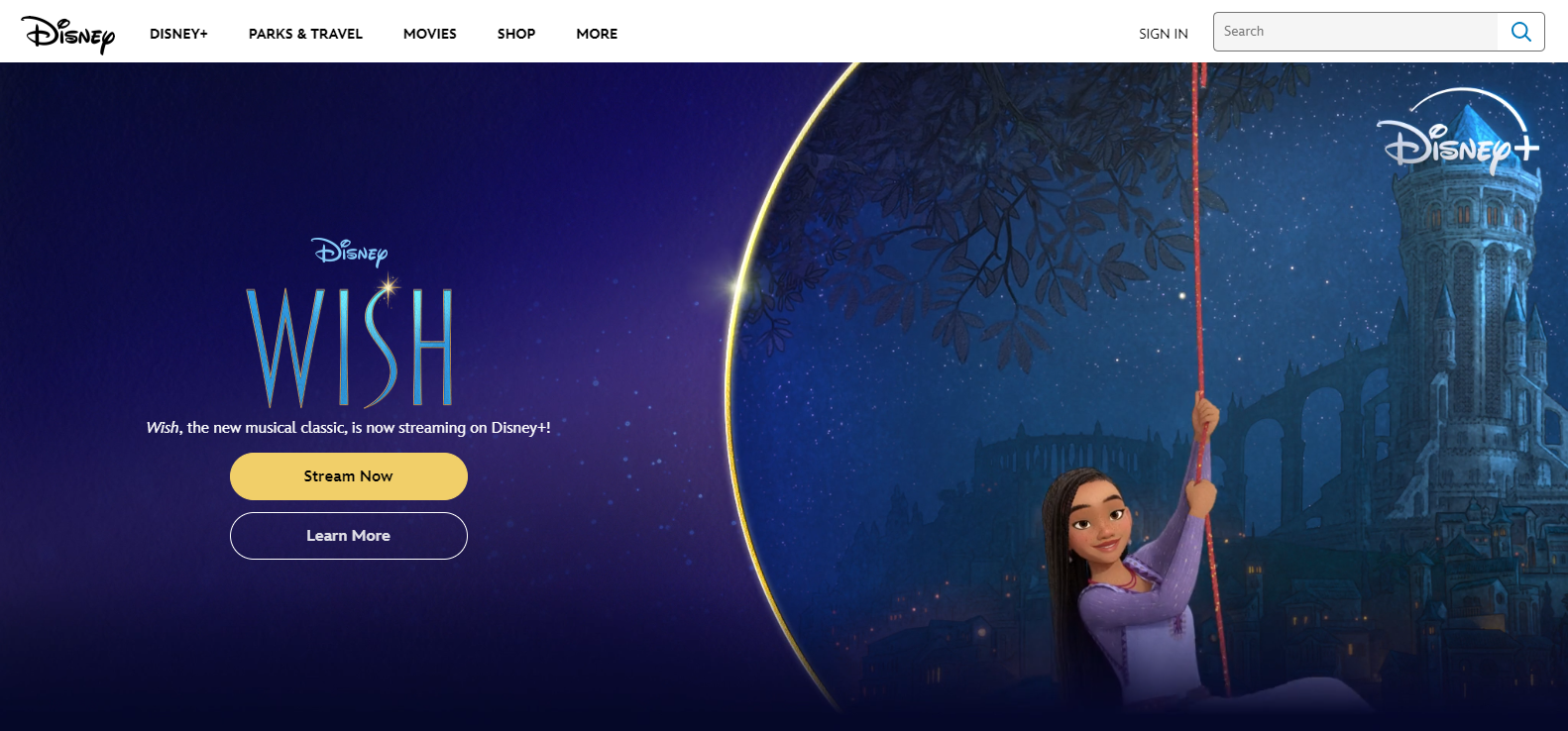
- Starbucks: Starbucks’ Mobile Order & Pay feature allows customers to order and pay for their beverage or food via the Starbucks app and pick it up at their chosen location. This service is tightly integrated with Starbucks’ loyalty program, enabling customers to earn rewards and receive personalized offers based on their preferences and purchase history. The convenience of skipping the line and the personalization of offers enhance the customer experience, making every interaction with the brand smooth and rewarding. The app’s success in enhancing customer experience is evident in the high usage rates of the Mobile Order & Pay feature and the significant percentage of sales it represents.

- Bank of America: Bank of America’s omnichannel approach includes a robust online banking platform, a highly functional mobile app, and integrated in-branch experiences. Customers can start a banking task on one channel and complete it on another seamlessly. For instance, they might begin applying for a loan online and finalize it in person with the assistance of a bank representative. This integrated approach provides customers with flexibility and control over their banking activities, improving convenience and trust in the bank’s services. The ability to transition smoothly between channels according to their needs is a key aspect of the enhanced customer experience offered by Bank of America.

- IKEA: IKEA has invested in an omnichannel shopping experience that includes a user-friendly website, a mobile app that allows customers to visualize how furniture would look in their home using AR, and in-store experiences that are enhanced by digital kiosks and the app itself. Customers can plan their purchases online, check inventory levels at their local store, and even use the app as a navigation tool while shopping in-store. This omnichannel approach addresses some of the traditional pain points in furniture shopping by providing tools that assist in decision-making and improve in-store navigation. The AR feature, in particular, has been praised for its ability to enhance customer confidence in their purchase decisions, leading to a more satisfying shopping experience.

Increased Sales and Revenue Growth
An effective omnichannel strategy directly contributes to increased sales and revenue growth. By offering multiple channels for customers to make purchases, retailers can capture a broader audience and meet customers at their point of need, regardless of the shopping channel they prefer. Furthermore, a seamless omnichannel experience encourages cross-channel purchases. For example, the ability to return online purchases in-store or to check online inventory in real-time while shopping in a physical store can enhance customer satisfaction and lead to additional sales.
Impact of Omnichannel Strategies on Sales Performance
The implementation of omnichannel strategies marks a transformative approach in engaging customers, impacting sales performance significantly. By offering a seamless shopping experience across online, offline, mobile, and social media platforms, retailers can cater to a wider array of customer preferences and shopping behaviors. This holistic approach ensures that whether a customer prefers to shop in-store, through an app, or online, their experience is consistent and fluid.
One of the key benefits of omnichannel retailing is the ability to leverage each channel’s strengths, thereby maximizing customer reach and engagement. For instance, online platforms can offer a broader range of products than is feasible in physical stores, while in-store experiences can provide tactile engagement that online channels cannot.
In many cases, the integration of online and offline channels allows customers to check inventory online before making a trip to the store, or to order a product online and pick it up in-store at their convenience. Such flexibility adds significant value to the customer’s shopping experience, making it more likely that they will choose to shop with that retailer again in the future. This synergy between channels enhances the overall shopping experience, leading to increased customer satisfaction, higher conversion rates, and ultimately, improved sales performance.
Moreover, the data gathered from omnichannel interactions provides invaluable insights into customer behavior and preferences. Retailers can use this data to tailor marketing messages, personalize offers, and even adjust product offerings to better meet the needs of their target market. This level of personalization and attentiveness can dramatically increase customer loyalty and repeat business, further boosting sales performance.
In essence, the implementation of omnichannel strategies represents a shift towards a more customer-centric approach to retail. By leveraging the strengths of each channel and ensuring a seamless transition between them, retailers can significantly improve customer engagement, satisfaction, and ultimately, sales performance. This holistic approach not only meets but exceeds the expectations of the modern shopper, setting a new standard for retail success.
Analysis of How Omnichannel Retailing Drives Revenue Growth
Omnichannel retailing drives revenue growth through a multifaceted strategy that enhances customer experience, optimizes inventory management, and leverages data-driven insights for personalized engagement. This approach fundamentally changes the retail landscape, providing businesses with a powerful toolkit to increase sales and foster sustainable growth.
- Increase Purchase Value: Omnichannel retailing drives revenue growth by broadening the customer base and increasing the average purchase value. Customers engaged across multiple channels tend to spend more than those who shop through a single channel. This increase in spending is attributed to several factors, including enhanced customer loyalty, personalized marketing efforts, and the convenience of cross-channel shopping options like click-and-collect services.
- Personalization and Targeted Marketing: Omnichannel strategies facilitate better data collection and analytics, enabling retailers to gain insightful customer data across all channels. This data allows for more targeted and personalized marketing campaigns, special offers, and promotions, which can more effectively convert leads into sales. By understanding customer preferences and behaviors, retailers can tailor their offerings to match customer needs, further driving revenue growth.
- Expanding Market Reach: Omnichannel retailing also breaks down geographical and logistical barriers, allowing retailers to reach a broader audience. Customers from different regions or those who prefer shopping online can easily access the brand’s offerings, leading to an expanded customer base and increased sales. Additionally, the data collected from these interactions can help retailers identify new market opportunities and customer segments to target.
- Agility and Competitive Advantage: Omnichannel retailing provides businesses with the agility to respond quickly to market changes and customer needs. This flexibility is a significant competitive advantage in today’s fast-paced retail environment. Retailers can quickly implement changes to their strategy based on real-time data, staying ahead of competitors and meeting customer expectations more effectively. This agility helps sustain long-term revenue growth by ensuring that the business remains relevant and responsive to the market.
Examples of Businesses That Have Seen Growth Due to Omnichannel Efforts
Successful omnichannel strategies that have facilitated growth can be seen across various sectors of the retail industry. These examples not only highlight the benefits of omnichannel retailing but also demonstrate how integrating physical and digital channels can lead to significant business growth. Here are a few notable examples:
- Target: Target has effectively harnessed its omnichannel strategy through services like Order Pickup and Drive Up, allowing customers to place orders online and pick them up at the store without leaving their cars. The retailer has also integrated its app to enhance in-store shopping, enabling customers to use their smartphones to scan items for prices, and promotions, and to navigate aisles more efficiently with store maps. These omnichannel efforts have not only improved customer satisfaction but also significantly increased sales. During periods of high demand, Target’s omnichannel services have helped to maintain strong sales figures, demonstrating the value of a well-integrated retail strategy that bridges the gap between online and physical shopping experiences.
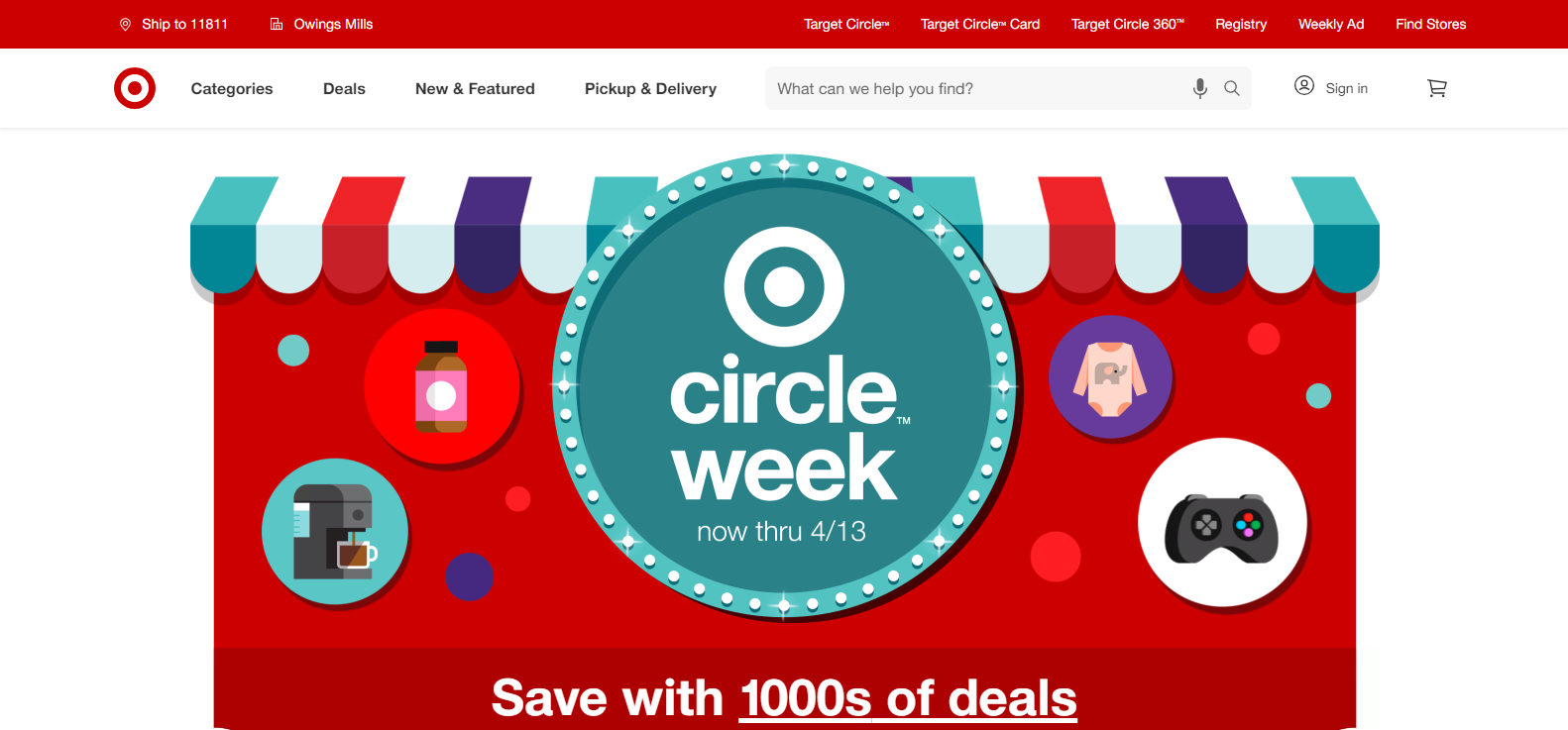
- Nike: Nike’s approach to omnichannel retailing includes a robust online presence, innovative store concepts, and the Nike app ecosystem, which includes the Nike Shopping App, SNKRS, Nike Run Club, and Nike Training Club apps. These platforms offer a personalized shopping experience, product customization, and engaging content that connects with their community. This strategy has led to a direct connection with consumers, resulting in increased sales through its digital channels and a more loyal customer base. By leveraging customer data across these channels, Nike has been able to deliver personalized marketing and product recommendations, further driving sales and customer engagement.

- Sephora: Sephora’s omnichannel approach focuses on a seamless integration of its digital and physical stores. The beauty retailer’s app and website are integrated with its loyalty program, offering personalized recommendations, virtual try-on features, and online reservations for in-store services. This comprehensive strategy enhances customer experiences and encourages them to engage with the brand both online and in-store. The ability to try products virtually before purchasing has led to increased customer satisfaction and sales, while the seamless loyalty program encourages repeat business across all channels.
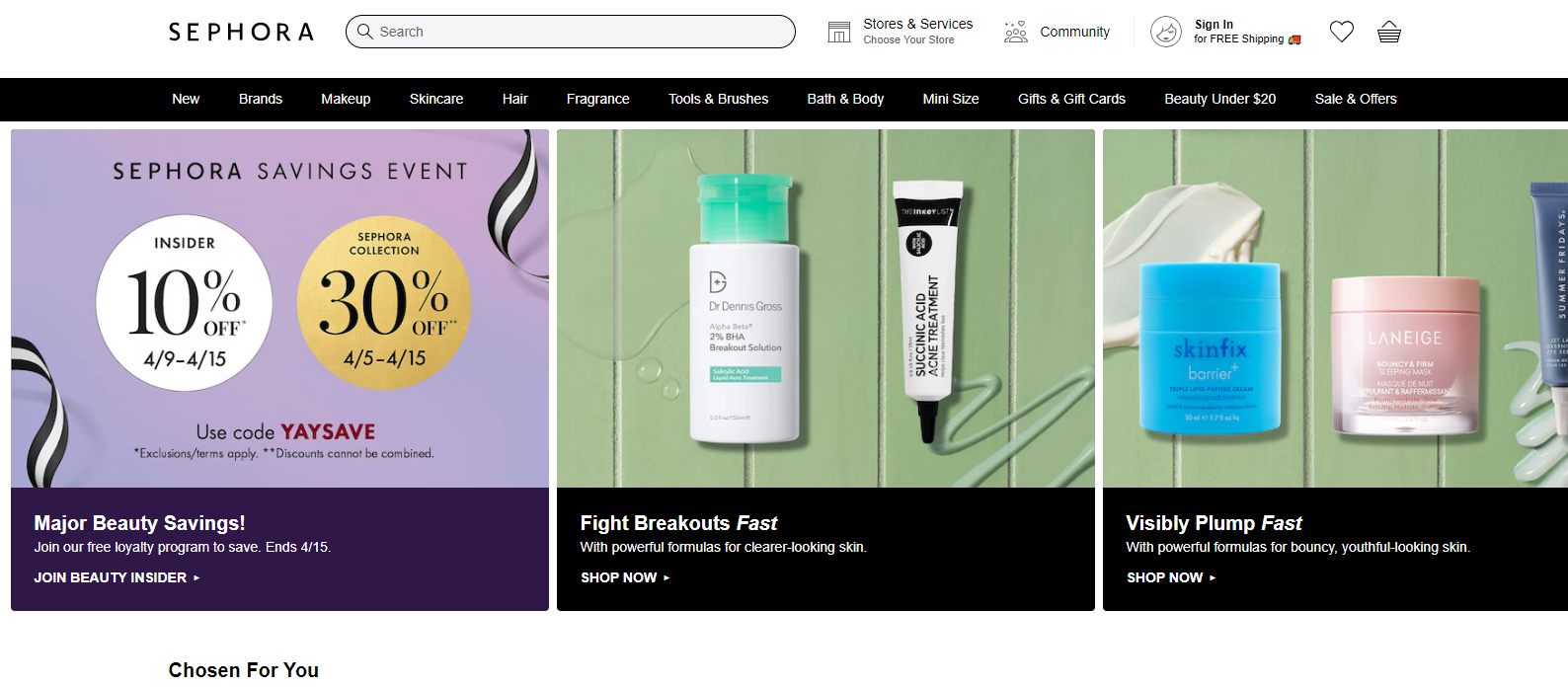
- Best Buy: Best Buy revitalized its business by implementing an omnichannel strategy that includes price matching, in-store consultations, and the option for customers to order products online and pick them up at their nearest store. The retailer also enhanced its mobile app to improve the shopping experience, offering detailed product information, customer reviews, and the ability to check in-store availability. These initiatives have successfully countered showrooming (where shoppers browse in-store but buy online) and turned it into an advantage. By offering competitive pricing and superior customer service, Best Buy has seen growth in both its online and in-store sales, demonstrating the power of a cohesive omnichannel strategy.
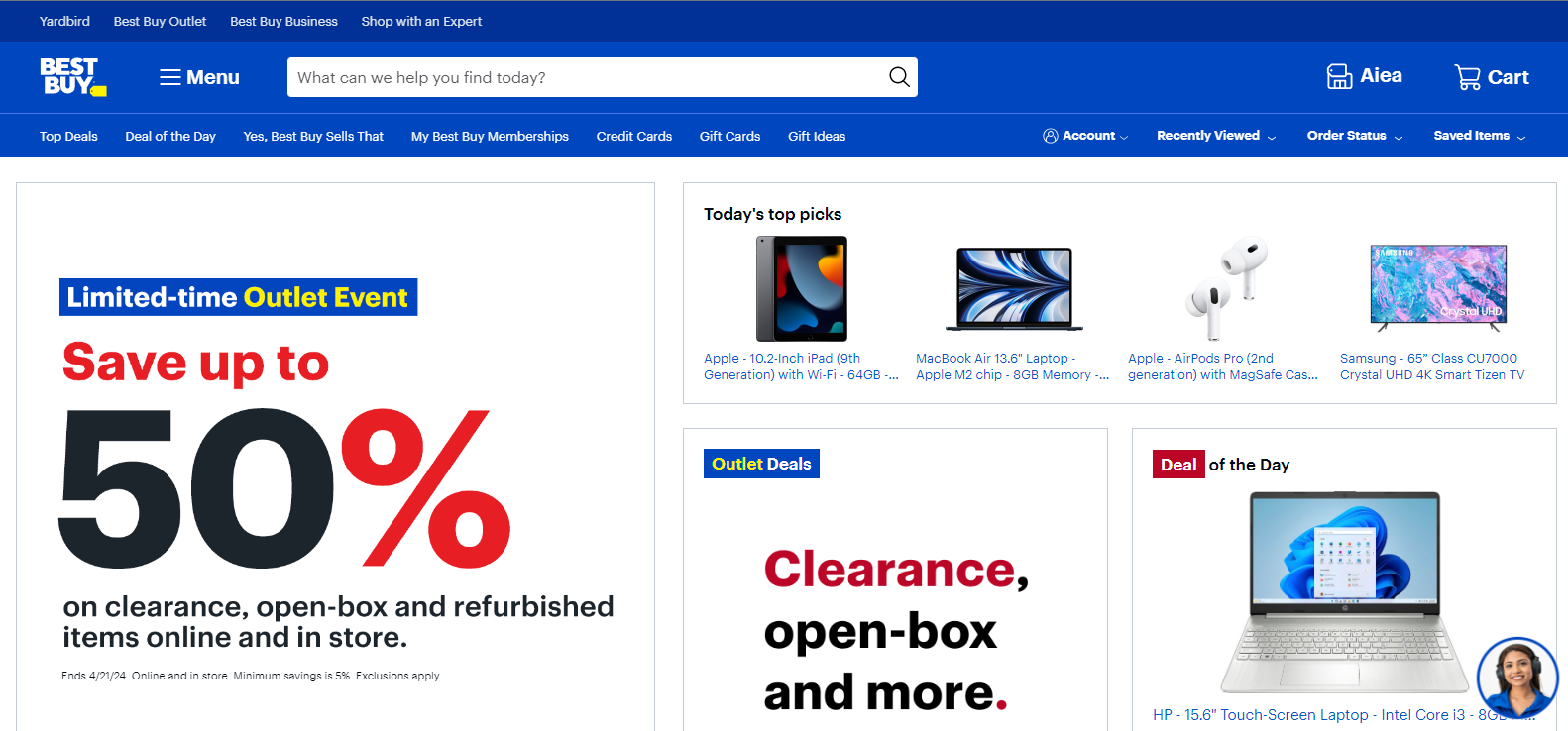
Improved Inventory Management and Distribution
In the dynamic world of retail, the importance of efficient inventory management and distribution cannot be overstated. The advent of omnichannel retailing has brought about significant improvements in these areas, offering benefits that not only streamline operations but also enhance the customer shopping experience. Omnichannel retailing requires a synchronized view of inventory across all sales channels, which significantly improves inventory management and distribution. This holistic view enables retailers to more accurately forecast demand, optimize stock levels, and reduce the costs associated with overstocking or stockouts. Improved inventory visibility also supports strategies such as ship-from-store, which can expedite order fulfillment and enhance customer satisfaction by leveraging the physical store network as a distribution asset.
The Role of Omnichannel in Streamlining Inventory Management
Omnichannel retailing, by its very design, integrates various shopping channels to provide a cohesive customer experience, whether online, in-store, or through mobile platforms. A critical component of this seamless integration is the ability to manage inventory efficiently across all channels. Omnichannel strategies enable retailers to synchronize their stock levels, ensuring that inventory information is consistent and up-to-date, regardless of where the sale is made.
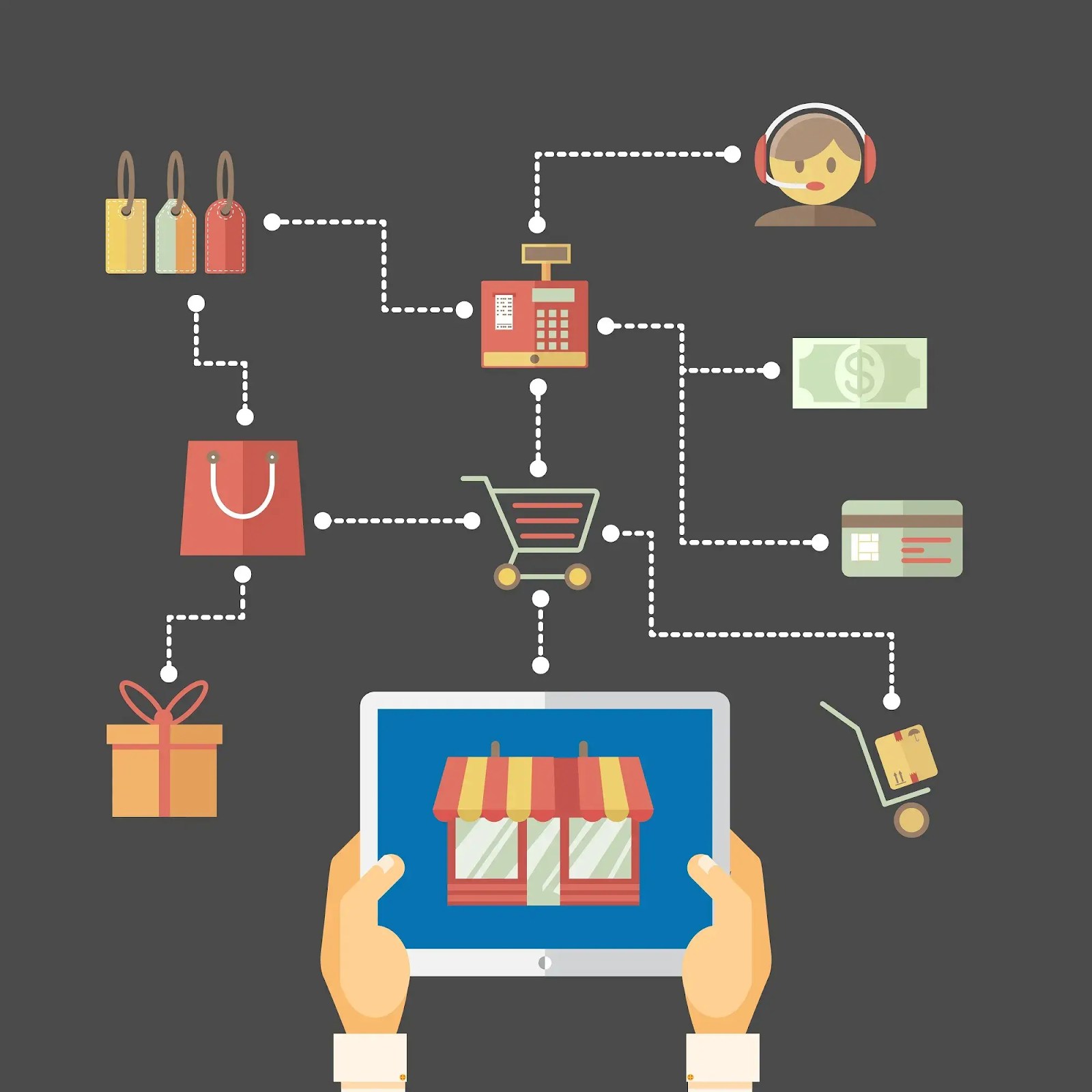
This approach not only mitigates the risk of overstocking or stockouts but also facilitates a more dynamic inventory management process. By leveraging data analytics, retailers can predict demand more accurately and adjust their inventory accordingly. This adaptability is crucial in responding to market trends and consumer preferences, allowing businesses to optimize their stock levels and reduce holding costs.
How Omnichannel Approaches Improve Distribution Efficiency
Omnichannel retailing also plays a significant role in enhancing distribution efficiency. By integrating offline and online sales channels, retailers can utilize their physical stores as fulfillment centers for online orders, a practice known as “ship from store.” This strategy reduces the distance goods need to travel, leading to faster delivery times and lower shipping costs. Moreover, it allows retailers to leverage their existing retail footprint for distribution, making the process more efficient and environmentally friendly.
Furthermore, omnichannel strategies enable a more flexible approach to distribution, such as offering customers various delivery options including home delivery, click-and-collect, and ship-to-store. This flexibility not only improves customer satisfaction by providing more convenience but also optimizes the distribution process by aligning it more closely with customer demand and inventory levels.
The Benefits of Real-Time Inventory Visibility for Both Customers and Retailers
Perhaps one of the most significant benefits of omnichannel retailing is the provision of real-time inventory visibility. For customers, this means being able to check the availability of products across all channels at any time, enhancing their shopping experience by providing them with the information they need to make informed purchasing decisions. This transparency can lead to higher customer satisfaction and loyalty, as shoppers are less likely to encounter the frustration of finding out that an item is out of stock after making the decision to purchase.
For retailers, real-time inventory visibility is equally beneficial. It provides a comprehensive view of stock levels across all channels, enabling better inventory management and planning. Retailers can quickly identify which products are performing well and which are not, allowing for more strategic inventory decisions. Additionally, this visibility supports the efficient allocation of stock, ensuring that products are available where and when they are needed most.
Data Collection, Analysis, and Decision Making
The integration of various sales channels provides retailers with a wealth of data about customer preferences, behaviors, and purchasing patterns. By collecting and analyzing this data, businesses can gain valuable insights that inform strategic decisions. This could range from tailoring marketing messages to optimizing the product mix, pricing strategies, or even store layouts based on real customer interactions. Data-driven decision-making empowers retailers to stay ahead of trends, anticipate customer needs, and adapt quickly to market changes.
The Importance of Data in Omnichannel Retailing
In the landscape of omnichannel retailing, data acts as the cornerstone upon which businesses can build a comprehensive understanding of their customers’ behaviors, preferences, and purchasing patterns. The multifaceted nature of omnichannel retailing—encompassing online platforms, mobile apps, social media, and physical stores—provides a wealth of data points that, when properly analyzed, offer invaluable insights into customer engagement across different channels. This deepened understanding is crucial not only for optimizing the customer journey but also for aligning product offerings, marketing strategies, and inventory management with actual consumer demand.

The benefits of omnichannel retailing are particularly evident in the capacity for data to bridge the gap between online and offline worlds, offering a unified view of customer interactions. This holistic perspective is instrumental in creating cohesive and personalized shopping experiences, enhancing customer satisfaction, and driving loyalty.
- Enhanced Customer Understanding: Data collected from various channels—be it in-store interactions, online purchases, social media engagement, or mobile app usage—provides a comprehensive view of the customer’s behavior, preferences, and needs. This information is invaluable for retailers seeking to understand their customers better. By analyzing this data, businesses can identify patterns and trends that inform product development, marketing strategies, and customer service approaches, ensuring that these elements are aligned with customer expectations.
- Streamlined Operations and Reduced Costs: Data analytics can streamline operational processes and reduce costs in omnichannel retailing. By understanding customer traffic patterns, purchase behaviors, and channel preferences, retailers can optimize staffing, manage store layouts more effectively, and allocate resources efficiently. Additionally, data can help identify areas where operational improvements can be made, such as streamlining the supply chain or enhancing the online checkout process, further reducing operational costs.
- Informed Decision Making: In the dynamic retail landscape, making informed decisions quickly can provide a competitive edge. Data collected from omnichannel retailing activities offers actionable insights that support strategic decision-making. Retailers can use data to identify growth opportunities, assess the effectiveness of marketing campaigns, and make adjustments to their omnichannel strategies in real-time. This agility enables businesses to respond to market changes and customer feedback more effectively, driving continuous improvement and growth.
- Competitive Differentiation: In a crowded market, data can be a differentiator for retailers adopting an omnichannel approach. By leveraging data to offer superior customer experiences, personalized interactions, and efficient service, retailers can stand out from their competitors. This differentiation is critical for attracting and retaining customers, building brand loyalty, and securing a larger share of the market.
The role of data in omnichannel retailing extends far beyond mere transactional analysis. It is a strategic asset that empowers retailers to understand their customers deeply, personalize experiences, manage inventory efficiently, streamline operations, make informed decisions, and differentiate themselves in a competitive marketplace. The effective collection, analysis, and utilization of data are fundamental to the success of any omnichannel retail strategy.
How Omnichannel Strategies Enhance Data Collection and Analysis
Omnichannel retailing enhances data collection and analysis by aggregating customer interactions across all channels into a single, coherent dataset. This integration allows retailers to capture a complete picture of the customer journey, from initial product discovery to post-purchase feedback. By leveraging advanced analytics and machine learning algorithms, businesses can dissect this data to uncover patterns and trends that might not be visible when viewing channels in isolation.
For instance, omnichannel strategies facilitate the tracking of a customer’s online browsing behavior and correlate it with their in-store purchases. This level of insight can reveal product preferences, the effectiveness of online marketing in driving in-store sales, and opportunities for cross-selling and upselling. Additionally, data collected from various channels can help identify friction points in the customer journey, enabling retailers to streamline processes and enhance the overall shopping experience.
Leveraging Data for Better Decision-Making and Personalized Marketing
The true power of omnichannel retailing lies in its ability to leverage collected data for strategic decision-making and personalized marketing. With a comprehensive dataset, retailers can make informed decisions regarding inventory distribution, store layouts, and product development, ensuring that these elements are in alignment with customer needs and preferences.
Personalized marketing, in particular, stands out as one of the most significant benefits of omnichannel retailing. By understanding individual customer behaviors and preferences, retailers can tailor their marketing messages, promotions, and product recommendations to resonate with each customer. This level of personalization not only increases the effectiveness of marketing campaigns but also enhances customer engagement and loyalty. For example, a customer who frequently browses outdoor equipment online can receive targeted promotions for related products in-store, or exclusive offers via email or mobile app notifications.
Moreover, the insights gained from omnichannel data analytics can inform dynamic pricing strategies, optimize email marketing campaigns, and enhance social media engagement, all tailored to the individual preferences of diverse customer segments. This strategic use of data not only drives sales but also builds a strong, loyal customer base that feels understood and valued by the brand.
Building Brand Loyalty and Retention
The adoption of omnichannel strategies has emerged as a powerful tool for achieving these objectives, fundamentally changing how businesses interact with their customers across various platforms. A consistent and personalized customer experience across all channels not only meets customer expectations but often exceeds them, fostering a strong sense of brand loyalty. Moreover, the convenience and flexibility of omnichannel shopping, coupled with the feeling of being valued and understood, encourage customers to return. Loyalty programs that reward customers for purchases across channels further reinforce this loyalty, turning one-time buyers into lifelong advocates for the brand.
The Impact of Omnichannel Strategies on Customer Loyalty
The benefits of omnichannel retailing in enhancing customer loyalty are multifaceted and significant. By offering a seamless shopping experience across online and offline channels, omnichannel retailing meets customers’ growing expectations for convenience, flexibility, and personalized engagement. When customers interact with a brand that recognizes them across all platforms, providing consistent service and tailored recommendations, their trust, and loyalty to the brand deepen.

Omnichannel strategies empower businesses to collect and analyze customer data from multiple touchpoints, enabling them to understand and anticipate customer needs better. This understanding allows for the creation of personalized shopping experiences, further cementing the customer’s emotional connection to the brand. The ability to shop, receive support, and engage with a brand through multiple channels at their convenience enhances the customer’s perception of the brand, leading to higher satisfaction rates, repeat purchases, and, ultimately, stronger loyalty.
Strategies for Leveraging Omnichannel Retailing to Improve Customer Retention
To leverage the benefits of omnichannel retailing effectively for customer retention, businesses must adopt several key strategies:
- Personalization at Scale: Use data analytics to understand individual customer preferences and behaviors, and tailor the shopping experience accordingly. Personalized recommendations, promotions, and content across channels can make customers feel valued and understood, encouraging repeat business.
- Seamless Integration Across Channels: Ensure that customers can move flawlessly between channels without losing context or experiencing a drop in service quality. Features such as saving shopping carts across devices, offering click-and-collect services, and providing consistent product information and customer support across platforms are essential.
- Loyalty Programs that Reward Omnichannel Engagement: Develop loyalty programs that reward customers not just for purchases but for engagement across channels. This could include points for writing reviews, engaging with social media posts, or using the brand’s app. Such rewards not only incentivize purchases but also deepen the customer’s engagement with the brand.
- Consistent and High-Quality Customer Service: Omnichannel retailing should extend to customer service, with support available across multiple channels. Integrating customer service platforms ensures that regardless of how a customer reaches out for support, their inquiries are managed efficiently and effectively, contributing to a positive brand perception.
The Role of Consistent Brand Experience Across Channels in Building Loyalty
The cornerstone of building loyalty through omnichannel retailing lies in delivering a consistent brand experience across all channels. Consistency in messaging, visual identity, product quality, and customer service reassures customers and reinforces brand recognition. When customers encounter a brand that presents itself uniformly, whether on its website, social media, in-store, or through its app, it creates a sense of reliability and trustworthiness.
A consistent brand experience eliminates confusion and builds a strong, coherent brand image in the customer’s mind. This reliability is crucial for customer retention, as customers are more likely to return to a brand that has consistently met or exceeded their expectations. Furthermore, a brand that maintains this consistency across diverse channels demonstrates its commitment to quality and customer satisfaction, key drivers of customer loyalty.
In sum, the benefits of omnichannel retailing in building brand loyalty and retention are extensive. By implementing strategies that emphasize personalization, seamless integration, rewarding loyalty programs, and consistent brand experiences, businesses can significantly enhance customer loyalty. This loyalty not only drives repeat business but also transforms customers into brand advocates, further extending the brand’s reach and impact. Through omnichannel retailing, businesses can meet and surpass the evolving expectations of their customers, securing their position in a competitive marketplace.
How to Utilize the Benefits of Omnichannel Retail
In the rapidly evolving retail landscape, the benefits of omnichannel retailing are more pronounced than ever. This approach not only enhances customer experience but also propels businesses towards greater operational efficiencies and increased sales. To fully utilize the benefits of omnichannel retailing, it’s essential to understand the strategic framework that underpins a successful implementation. This section delves into the strategies for implementing a successful omnichannel model, best practices for integrating multiple channels, leveraging technology for omnichannel success, and measuring and optimizing omnichannel performance.
Strategies for Implementing a Successful Omnichannel Retailing Model
To tap into the benefits of omnichannel retailing, retailers must adopt a customer-centric approach. The first step is to develop a comprehensive understanding of your customers’ shopping behaviors, preferences, and expectations. This insight forms the foundation of a successful omnichannel strategy, guiding decisions on channel integration, personalization, and customer engagement.
- Unified Customer Experience: Ensure that your brand message and customer experience are consistent across all channels. This uniformity reinforces your brand identity and fosters customer loyalty.
- Inventory Visibility: Implement an integrated inventory management system that provides real-time visibility across all channels. This transparency enables customers to check product availability seamlessly, regardless of the shopping channel they prefer.
- Flexible Fulfillment Options: Offer a range of fulfillment options, such as buy-online-pick-up-in-store (BOPIS), curbside pickup, and same-day delivery. Flexibility in fulfillment enhances customer satisfaction and can drive incremental sales.
- Customer Data Integration: Leverage a centralized customer data platform to gather and analyze data from all touchpoints. This holistic view of customer interactions enables personalized marketing, targeted promotions, and improved customer service.
Best Practices for Integrating and Optimizing Multiple Channels
Maximizing the benefits of omnichannel retailing requires the seamless integration of multiple channels. Here are some best practices:
- Channel-Agnostic Design: Design your retail operations to be channel-agnostic. This approach ensures that customers receive a high-quality experience, whether they shop online, in-store, or through social media.
- Mobile Optimization: With the increasing use of smartphones for shopping, ensure that your online presence is mobile-friendly. A responsive design improves the shopping experience, increases engagement, and boosts sales.
- Personalized Customer Journeys: Use customer data to create personalized shopping experiences. Tailored product recommendations and promotions can significantly enhance the customer journey across all channels.
- Cross-Channel Marketing: Develop marketing campaigns that span multiple channels, leveraging the strengths of each. This strategy can increase reach, engagement, and conversion rates.
Leveraging Technology for Omnichannel Success: Tools and Platforms
Technology plays a crucial role in enabling the benefits of omnichannel retailing. Investing in the right tools and platforms is essential for a seamless integration of channels.
- eCommerce Platforms: Choose an eCommerce platform that supports omnichannel capabilities, such as Magento, Shopify Plus, or BigCommerce. These platforms offer features like integrated inventory management, multi-channel marketing, and customer segmentation.
- Customer Relationship Management (CRM) Systems: Implement a CRM system that centralizes customer data from all channels. This system should support personalized marketing, customer service, and sales strategies.
- Inventory Management Software: Use advanced inventory management software to maintain visibility and control over stock levels across all sales channels. This software should facilitate efficient order fulfillment and returns management.
- Analytics and Reporting Tools: Employ analytics tools to measure and analyze performance across channels. Google Analytics, Adobe Analytics, and other specialized platforms can provide insights into customer behavior, channel effectiveness, and operational efficiency.
- AI and VR: AI has become a cornerstone of modern omnichannel strategies, offering unparalleled capabilities in data analysis, customer service, and personalization. VR technology offers immersive experiences that can transport customers to virtual environments, enhancing their engagement and understanding of products. By leveraging AI and VR, retailers can not only enhance the customer experience across all channels but also gain insights for inventory management, streamline operations, and ultimately, drive sales. As technology evolves, the potential for AI and VR in retail will continue to expand, making them indispensable tools for achieving omnichannel success.
Measuring and Optimizing Omnichannel Performance
To sustain the benefits of omnichannel retailing, it’s vital to continuously measure and optimize performance. Key performance indicators (KPIs) such as customer retention rates, average order value, and channel-specific sales can provide valuable insights. Implementing a cycle of measurement, analysis, and refinement is essential for optimizing omnichannel performance:
- Regularly Review KPIs: Establish a routine for monitoring omnichannel KPIs, allowing for timely adjustments to strategies based on performance data.
- Conduct A/B Testing: Experiment with different approaches to see what works best for your customers and your brand. This can include testing different marketing messages, website layouts, or customer service tactics.
- Gather Customer Feedback: Continuously collect and analyze customer feedback across all channels. This direct insight can be invaluable in understanding customer needs and identifying areas for improvement.
- Stay Informed on Industry Trends: The retail landscape is constantly evolving. Staying informed about the latest trends and technologies in omnichannel retailing can provide new ideas for enhancing your strategy.
Utilizing the benefits of omnichannel retail involves a strategic blend of technology, customer experience, and operational excellence. The goal is to create a seamless shopping experience for customers, whether they’re shopping online from a mobile device, a laptop, or in a brick-and-mortar store. By following these steps, businesses can effectively utilize the benefits of omnichannel retail, such as improved customer satisfaction, increased sales, and enhanced operational efficiency. Omnichannel retailing is not just a business strategy; it’s a customer-centric approach that recognizes and responds to the evolving ways in which customers shop and interact with brands.
Challenges and Considerations in Omnichannel Retailing
While the benefits of omnichannel retailing are substantial, from enhanced customer experience to increased sales and loyalty, the path to achieving a successful omnichannel strategy is fraught with challenges. Understanding these challenges and considering key factors for a successful transformation are critical steps in leveraging the full potential of omnichannel retailing. This section explores the common hurdles businesses face, essential considerations for an effective strategy, and the future trends that will shape omnichannel retailing.
Common Challenges Businesses Face When Implementing an Omnichannel Strategy
- Data Silos: Many businesses struggle with data silos that prevent a unified view of customer interactions across channels. Overcoming this requires integrating various data sources into a cohesive system that provides actionable insights.
- Technological Integration: Implementing a technology stack that seamlessly connects eCommerce platforms, CRM systems, inventory management, and in-store technology can be daunting. The right solutions must not only fit current needs but also be scalable for future growth.
- Consistent Brand Experience: Ensuring a consistent brand experience across all channels, from online to in-store to mobile, presents a challenge. It requires a concerted effort to align messaging, design, and customer service standards.
- Inventory Management: Maintaining accurate inventory across multiple channels in real-time is critical but challenging. This complexity increases with the number of products and the geographical spread of inventory.
- Training and Culture: Shifting to an omnichannel approach requires a change in corporate culture and training for staff. Employees across departments need to understand the importance of a seamless customer experience and their role in delivering it.
Considerations for a Successful Omnichannel Transformation
To navigate these challenges and harness the benefits of omnichannel retailing, businesses must consider several key factors:
- Customer-Centric Approach: At the heart of omnichannel retailing is the customer experience. Understanding customer behavior, preferences, and expectations across channels is foundational to designing an effective omnichannel strategy.
- Integrated Technology Solutions: Invest in technology that integrates easily with existing systems and can scale as the business grows. This includes platforms that offer comprehensive analytics, customer data integration, and inventory synchronization.
- Unified Data Analytics: Leverage analytics to gain insights into customer journeys and channel performance. A unified data approach enables personalized marketing, improved product recommendations, and strategic inventory placement.
- Organizational Alignment: Ensure that all departments, from marketing to IT to customer service, are aligned with the omnichannel strategy. This may involve restructuring teams or processes to focus on delivering a cohesive customer experience.
- Invest in Training: Equip your staff with the knowledge and tools they need to implement your omnichannel strategy effectively. Regular training and development opportunities can help maintain high levels of service across all channels.
Future Trends in Omnichannel Retailing
As technology evolves and consumer behaviors shift, several key trends are poised to shape the future of omnichannel retailing:
- Artificial Intelligence and Machine Learning: AI and machine learning will play increasingly significant roles in personalizing the customer experience, optimizing inventory management, and automating customer service through chatbots and virtual assistants.
- Augmented Reality (AR) and Virtual Reality (VR): These technologies offer new ways for customers to engage with products online, from virtual try-ons to immersive product demonstrations, enhancing the online shopping experience.
- Social Commerce: The integration of eCommerce capabilities within social media platforms will continue to grow, requiring retailers to seamlessly connect these channels with their omnichannel strategies.
- Sustainability and Ethical Practices: Consumers are becoming more conscious of the environmental and ethical implications of their purchases. Omnichannel strategies will need to incorporate sustainable practices and transparency to meet customer expectations.
- Flexible Fulfillment Options: The demand for various fulfillment options, such as BOPIS, curbside pickup, and same-day delivery, will increase. Retailers must continue to innovate in logistics and fulfillment to meet these expectations.
Conclusion: Embracing the Future Through Omnichannel Retailing
In conclusion, the journey towards embracing omnichannel retailing is both challenging and rewarding. As we look to the future, it is imperative for retailers to consider the benefits of omnichannel retailing as a cornerstone of their strategy. By doing so, businesses can ensure they are well-positioned to meet the needs of their customers, adapt to the dynamic retail landscape, and achieve sustained success. The encouragement to embrace omnichannel approaches is not just about keeping pace with industry trends but about seizing the opportunity to redefine retail for the modern era.
Love our content? Please subscribe to our newsletter right below so we can send you our updates shortly after they are online.











